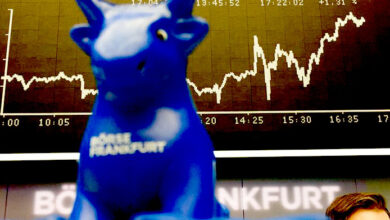The Evolution of Credit Suisse over 167 Years

Credit Suisse Group has a 167-year history that has been marked by various ups and downs. Below is a timeline of the significant events that have taken place at the Zurich-based bank:
1856: Politician and business leader Alfred Escher founds Schweizerische Kreditanstalt (SKA) to finance the expansion of the railroad network and promote Swiss industrialisation.
1870: SKA opens its first foreign representative office in New York.
1876: The bank moves into new headquarters on Zurich’s Paradeplatz; its first branch outside Zurich opens in Basel nearly three decades later.
1934: First Boston becomes the first publicly held investment bank in the United States.
1939: SKA creates Swiss American Corporation (New York) to focus on the underwriting and investment business.
1962: SKA takes over White, Weld and Co AG in Zurich from U.S. investment bank White Weld and renames it Clariden Finanz AG.
1964: SKA gets a license as a full-service bank in New York.
1977: Chiasso Affair money-laundering scandal leads to a historic loss and spurs the bank’s transition to an international financial group.
1982: SKA becomes the first Swiss bank with a seat on the New York Stock Exchange via its SASI unit; CS Holding is set up as a sister company of SKA to hold stakes in industrial companies.
1988: CS Holding buys a 45% stake in First Boston as part of a rescue deal and renames it CS First Boston. The two had first linked up a decade earlier to operate in the London bond market.
1989: CS Holding becomes SKA group’s parent company.
1990: The group takes a controlling stake in U.S. investment bank CS First Boston and buys Bank Leu, a Swiss private bank.
1993: The group buys Volksbank, Switzerland’s fourth-largest bank, and a year later buys Neue Aargauer Bank.
1997: A reorganisation turns CS Holding into Credit Suisse Group and drops the SKA name. It also buys insurer Winterthur, a strategic partner.
1999: The group buys the asset management business of Warburg, Pincus & Co, followed by the purchase of Wall Street firm Donaldson, Lufkin & Jenrette (DLJ) a year later.
2002: A reorganisation creates two units: Credit Suisse Financial Services and Credit Suisse First Boston; two years later, it splits into three units by adding Winterthur.
2005: Credit Suisse and CSFB merge and stop using the Credit Suisse First Boston brand name.
2006: The group divests Winterthur to French insurer AXA.
2007: The group merges four private banking units and a securities trading company into Clariden Leu.
2007/2008: The bank survives the global financial crisis without needing a state bailout, unlike rival UBS.
2012: The group absorbs Clariden Leu and merges private banking and asset management into one division.
2013: The group buys Morgan Stanley’s wealth management businesses in Europe, the Middle East, and Africa.
2015: The group realigns under CEO Tidjane Thiam into three wealth management units supported by two investment banking divisions.
2020:
- In February, a scandal over the bank’s covert surveillance operations leads to Thiam’s departure.
- In March, U.S. investment fund Archegos implodes, saddling Credit Suisse with a $5.5 billion loss.
- The same month, it has to freeze $10 billion in supply chain finance funds linked to insolvent British financier Greensill Capital, which it had marketed to clients as low-risk products.
2021:
- Antonio Horta-Osorio resigns as





